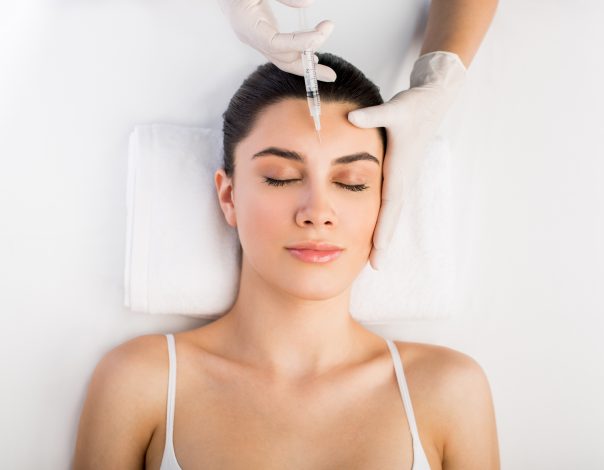What is the difference between Botox and Fillers?
Injectable treatments have become the go-to for non-invasive procedures. Patients who want to avoid surgery find that they can get the results they want from products such as BOTOX or dermal fillers. While both treatments may seem similar, their function is quite different.
While BOTOX works by freezing the underlying muscles of the skin and reducing the appearance of wrinkles, dermal fillers primarily focus on restoring lost volume to areas that have been affected by the natural aging process. Both products serve essential roles in any anti-aging routine and can take years off a patient’s look.
What is BOTOX?
Neuromodulators work by blocking the transmission of neurotransmitters in the underlying muscles of the treatment area. This prevents the muscles from contracting, leading to a reduction in wrinkles and fine lines. BOTOX has the ability to smooth out or eradicate wrinkles altogether. It is most often injected, in the eye region, on the forehead, or around the mouth.
First approved by the FDA in 1989, BOTOX is a safe and popular treatment method for much more than wrinkles. It can also be used to treat migraines, hyperhidrosis, and various other health issues.
The results from BOTOX and other neuromodulators can last up to 6 months.
What are dermal fillers?
A different type of injectable, dermal filler works by restoring lost volume to areas of the face that have changed over time. Fillers are most effective in areas like the cheeks, lips, and around the mouth. By filling in these areas, the face gains a more youthful aesthetic. Fine lines are smoothed out and hollow areas become full again. Among the various uses for fillers are:
- Enhancing the lips’ shape and volume
- Smoothing out fine lines that develop between the eyebrows
- Reducing nasolabial folds, which manifest between the nose and mouth
In some cases, fillers can also be used to reduce the appearance of scars and forehead wrinkles.
Juvéderm, Sculptra, RHA, and Restylane are a few of the most popular dermal fillers employed by cosmetic practitioners today. The active ingredient in these products is a naturally occurring chemical of the body known as Hyaluronic Acid, which gives the skin a marked plumpness.
These products were first approved by the FDA back in the early 2000s and have gained a reputation as being safe and reliable anti-aging treatments.
What is the takeaway?
All in all, BOTOX and fillers are very different products that are designed to address different issues. The areas in which they are used, and their functions differ greatly. What makes them similar, however, is that they are affordable, effective alternatives to surgery. It is highly recommended that patients refer to an experienced, skilled practitioner to carry out their treatments.


